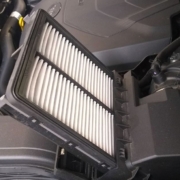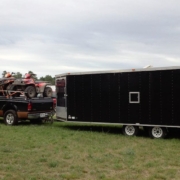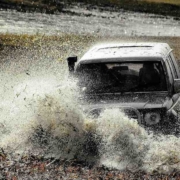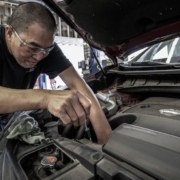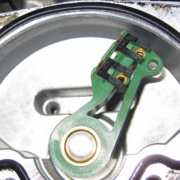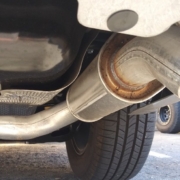NAPA Know How: How to Use an Oil Filter Wrench For An Easier Oil Change
[ad_1]
If it’s time for an engine oil change, you’ll need a few different tools and supplies. Gather new engine oil and a new oil filter, plus a wrench or socket for the oil drain plug, a drain pan and some rags for cleanup as well as safety gloves and glasses, too.
One other tool you’ll definitely need is an oil filter wrench, which comes in handy when a used oil filter doesn’t want to come off easily. Learn how to use an oil filter wrench so you can get the job done quickly and efficiently.
How to Use an Oil Filter Wrench
All oil filters and caps use right-hand threads — clockwise to tighten and counterclockwise to loosen. Some tools only grip counterclockwise for loosening. Several oil filter wrench types are available, each with its own strengths and weaknesses:
- End Cap: End cap filter wrenches fit a single filter size. You fit the cap to the filter and use a ratchet or wrench to loosen it.
- Claw: Universal claw-type wrenches have two or three claws that grip the oil filter. The more you turn the ratchet or wrench to loosen the filter, the tighter the claws grip. Spring-loaded claw wrenches tend to stay attached to the filter, freeing up your hands in tight spaces.
- Band: A band wrench is simple to use and fits a range of filter sizes. It works in one direction, with a swivel handle to fit tight spaces; others are used with a ratchet or wrench. Try flipping it over if it doesn’t grip.
- Strap: Strap wrenches use a flexible strap to grip the filter. Some have a handle, while others need a ratchet or wrench. Some strap wrenches grip in either direction. To use, clean the strap and filter to prevent slipping. Once the filter is loose, remove the strap before fully loosening the filter and removing it by hand. This prevents oil from soaking into the strap.
- Pliers: Oil filter pliers spread the force over three or four points to improve grip and limit slip but need more clearance to use. Be sure to get a firm grip with your pliers before attempting to loosen the filter.
- Chain: Chain wrenches wrap around the oil filter with extreme grip and are very effective. Some chain wrenches work in either direction.
- Wrench or Ratchet: Some spin-on oil filters and canister filters have a hex or square lug or a hole. Use a wrench, ratchet or socket to loosen the filter for these.
Here’s How NOT to Use an Oil Filter Wrench
For the most part, don’t use an oil filter wrench to install an oil filter, which needs very little torque. Spin-on oil filters are tightened one-half to three-quarters of a turn after gasket contact. For canister filters, use the tool only to tighten until it contacts the base, then apply the correct torque with a torque wrench. Canister filters are sealed by an O-ring and overtightening could break them. Oil filter torque is light, usually 10 to 20 foot-pounds.
Always check your maintenance or repair manual for vehicle specifics before changing your oil. After the oil change, clean up and recycle the used oil. Auto parts stores and many repair shops accept used oil for recycling.
Check out all the car filters available on NAPA Online or trust one of our 17,000 NAPA AutoCare locations for routine maintenance and repairs. For more information on oil filter wrenches, chat with a knowledgeable expert at your local NAPA AUTO PARTS store.
Photo courtesy of Wikimedia Commons.

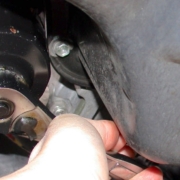
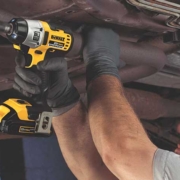

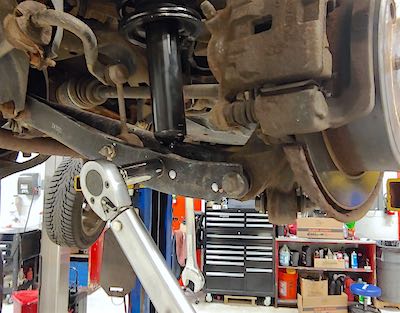 Though the weight of the vehicle plays a large part in keeping struts in their place, torque at both top and bottom mounts is critical. Aside from keeping everything together — no one wants to lose a wheel on the highway — proper torque maintains alignment angles that prolong tire life and stabilize steering. Look up torque specifications in the repair manual or ask your local mechanic for more information.
Though the weight of the vehicle plays a large part in keeping struts in their place, torque at both top and bottom mounts is critical. Aside from keeping everything together — no one wants to lose a wheel on the highway — proper torque maintains alignment angles that prolong tire life and stabilize steering. Look up torque specifications in the repair manual or ask your local mechanic for more information.